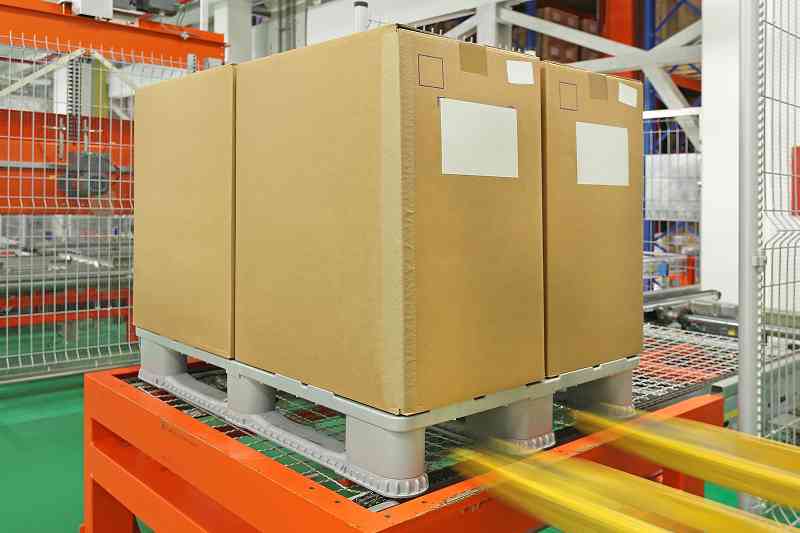How Much Weight Can Plastic Pallets Hold?
Real-world load ratings, what affects them, and how to choose safely

Key takeaways
- Plastic pallets come in different types and their weight capacities vary depending on the application and industry. Most plastic pallets carry ~2,000–5,000 lb dynamic, ~15,000–30,000+ lb static, and ~1,000–3,000 lb rack, but values are model-specific.
- Capacity depends on style, deck/runners, different materials, design choices, material, temperature, beam spacing, and load type (uniformly distributed vs. point).
- Consider the range of weight capacities for different industries and use cases. Choose by use case first, then verify with spec sheets and a pilot test to ensure acceptable deflection and handling.
Plastic pallets are designed to handle a wide range of loads, but their actual performance depends on several factors, including pallet style, material, and application. Plastic pallets come with different weight capacities depending on their design and intended use, so it is important to understand these variations when selecting a pallet.

Choosing the right pallet with the appropriate weight capacity can significantly improve efficiency in supply chain operations by reducing downtime and optimizing packaging processes.
How much weight can plastic pallets hold?
These are common capacity ranges for 48”×40” plastic pallets in real operations. These numbers represent a range of weight capacities, and actual pallet weight capacities may vary depending on the specific pallet type, design, and application.
- Dynamic (while lifted/moving): ~2,000–5,000 lb
- Static (stacked on floor): ~15,000–30,000+ lb
- Rack (unsupported beam/rack): ~1,000–3,000 lb per pallet, model-specific
Note: Dynamic load capacity is a key aspect of plastic pallet weight capacity, as it reflects the pallet load capacity when the pallet is in motion. Pallet weight capacity and pallet load capacity should always be verified for each use case to ensure safe handling, transportation, and storage. Also, plastic pallet weight can influence the overall load and should be considered when calculating total weight capacity.
Always verify the specific pallet’s datasheet and validate with a pilot test.
What the three ratings mean
Before comparing models, align on the rating definitions used by manufacturers.
- Dynamic load: Dynamic load capacity refers to the maximum amount a pallet can hold while moving loads, such as when lifted or transported by a forklift or pallet jack.
- Static load: This is the maximum amount of weight a pallet can hold at rest on a flat surface, indicating the pallet hold when stationary.
- Rack load: This is the maximum amount of weight a pallet can hold when supported only by rack beams on the edges, specifying the pallet can hold heavy loads in racking systems.

Pallet weight capacity refers to the maximum amount a pallet can hold under different conditions, including static, dynamic, and rack loads. Using the same definitions prevents apples-to-oranges comparisons.
Typical ranges by pallet style
Use these ranges as planning benchmarks; your final choice should follow the exact model spec. Terminology such as nestable, stackable, and rackable follows the ANSI MH1 standard for pallets.
| Pallet Type | Dynamic | Static | Rack |
|---|---|---|---|
| Nestable (feet base) | 1,500–3,000 lb | 10,000–20,000 lb | Not rated (floor/stack use) |
| Stackable (full-perimeter/picture-frame base) | 2,500–5,000 lb | 20,000–30,000+ lb | Sometimes rated—verify runners/lips |
| Rackable (runners/cruciform base) | 2,200–3,500 lb | 20,000–30,000+ lb | 1,500–3,000 lb |
Treat these ranges as illustrative, then confirm with the manufacturer’s published ratings.
Load type matters (more than you think)
How weight sits on the pallet dramatically changes real capacity.
- Uniform distributed load (UDL): Evenly spread cases, or loads that are evenly distributed across the pallet surface, provide the highest rating. Ensuring loads are evenly distributed allows the pallet to safely hold the intended weight and helps prevent product damage during transportation and handling.
- Point loads: Drums, totes, small footprints → lower effective capacity and increased risk of product damage if not properly supported.
- Warm vs. cold: Plastics stiffen in cold and soften in heat → ratings shift, and exposure to varying weather conditions during transportation or storage in warehouses and facilities can impact pallet performance.
- Motion & impact: Starts/stops, dock plates, jack entry reduce practical capacity, especially when goods are being transported through the supply chain.
Food and beverage products are commonly transported and stored on pallets in warehouses and facilities, making proper load distribution critical for safety and compliance in the supply chain.

Match your product geometry and environment to the pallet design, not just the headline number.
What drives a pallet’s capacity
These design choices largely determine stiffness, deflection, and safety margins.
- Deck design: The platform can be solid or vented; rib layout and open vs. closed perimeter affect how the platform supports the load.
- Runner configuration: 3-runner, 6-runner, cruciform, or feet (nestable).
- Material: Options include plastic material such as HDPE or PP, with choices between virgin, regrind, or recycled materials. Recycling is an important sustainability consideration, and recycled pallets can be both cost-effective and environmentally friendly.
- Wall thickness & weight: More resin typically increases stiffness/rating, contributing to the durability and ability of durable plastic pallets to support heavy loads.
- Deflection limit used: Many ratings assume ≤0.5–1.0 in in rack.
- Beam spacing & support: 36”–42” centers behave differently; center supports help, and the right choice depends on your facility's requirements.


Optimizing these variables for your business improves efficiency, helps in maintaining safe operations in your facility, and ensures a cost-effective choice.
Safety & compliance tips
Build simple rules that operators can follow without guesswork.
- Use a buffer: Keep 10–20% under the published rating.
- Label & train: Don’t mix non-rackable pallets into rack zones. Secure all pallet loads and clearly mark the maximum amount and weight limit for each pallet.
- Inspect regularly: Remove units with cracks, crushed feet, or bent runners, maintaining the integrity of pallets through regular checks.
- Document settings: Record beam spacing, pallet load, racking system, max load, and allowable deflection by zone.

Clear standards and training cut the risk of deflection, damage, and downtime.
Sample spec table (for planning)
The weights and load capacities shown in the table below vary by pallet style, material, and design. These values represent a range of typical specifications and are only a starting point for planning. Always confirm the exact load capacity and pallet weight for your specific application.
| Pallet style | Example dynamic | Example static | Example rack |
|---|---|---|---|
| Nestable 48×40 | 2,000 lb | 15,000 lb | Not rated |
| Stackable 48×40 | 3,500 lb | 25,000 lb | 1,200 lb (only if rack-rated) |
| Rackable 48×40 (3-runner) | 3,000 lb | 25,000 lb | 2,200 lb |
| Rackable 48×40 (cruciform) | 3,500 lb | 30,000 lb | 2,500–3,000 lb |
Use the table to shortlist candidates, then confirm exact ratings with the vendor’s datasheet.
Published load ratings and pallet weights are only a starting point—actual load capacities and the maximum amount a pallet can support safely will vary depending on your use case, environment, and handling. The right pallet depends on your specific needs, including the maximum amount to be supported, the total pallet weight, and whether you need to handle heavier loads (for example, rackable pallets are designed for heavier loads and demanding applications).
Conclusion
Real capacity depends on your use case, environment, and handling. Pick a pallet style that matches how you store (floor/stack/rack), confirm ratings and allowable deflection for your beam spacing, and pilot test with your actual loads. Keep a 10–20% safety margin, document the rules, and you’ll run safely at the lowest total cost per turn.
Sources
- ISO 8611 (Parts 1–3): Pallets for materials handling — Flat pallets — Test methods. International Organization for Standardization.
- ASTM D1185: Standard Test Methods for Pallets and Related Structures Employed in Materials Handling and Shipping. ASTM International.
- ANSI MH1: Pallets, Slip Sheets, and Other Bases for Unit Loads. MHI (Material Handling Industry).

